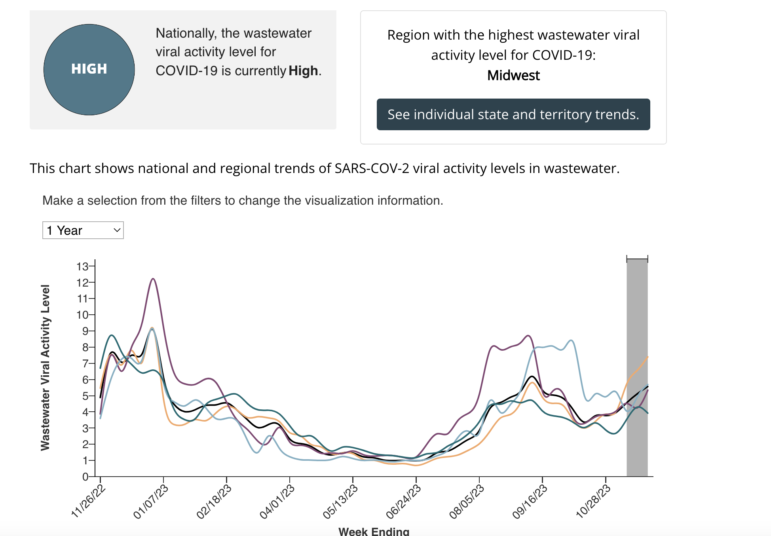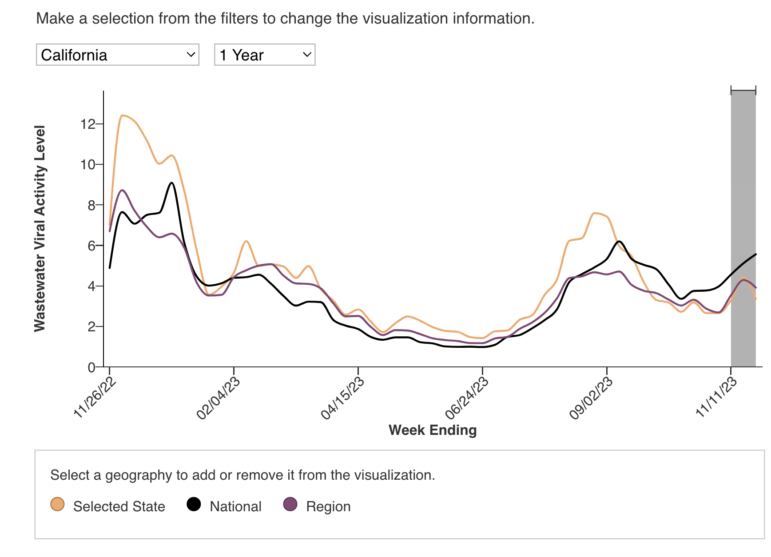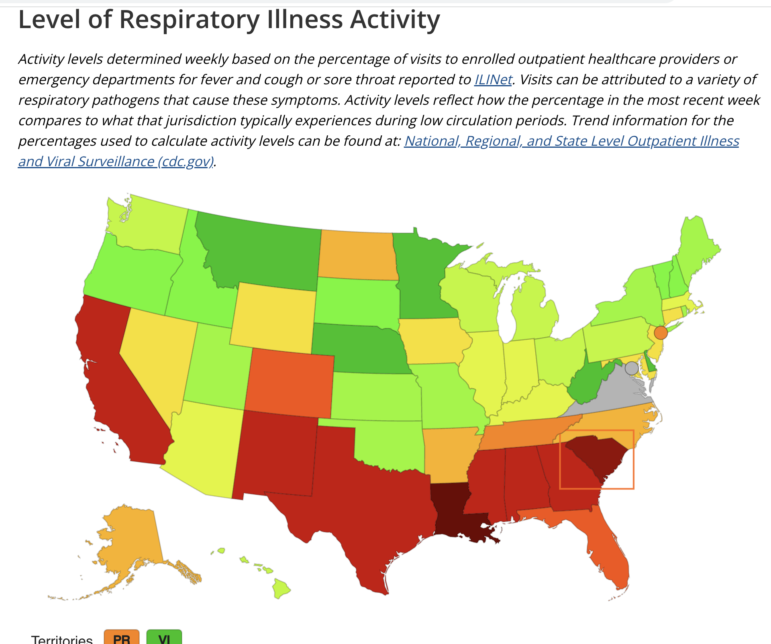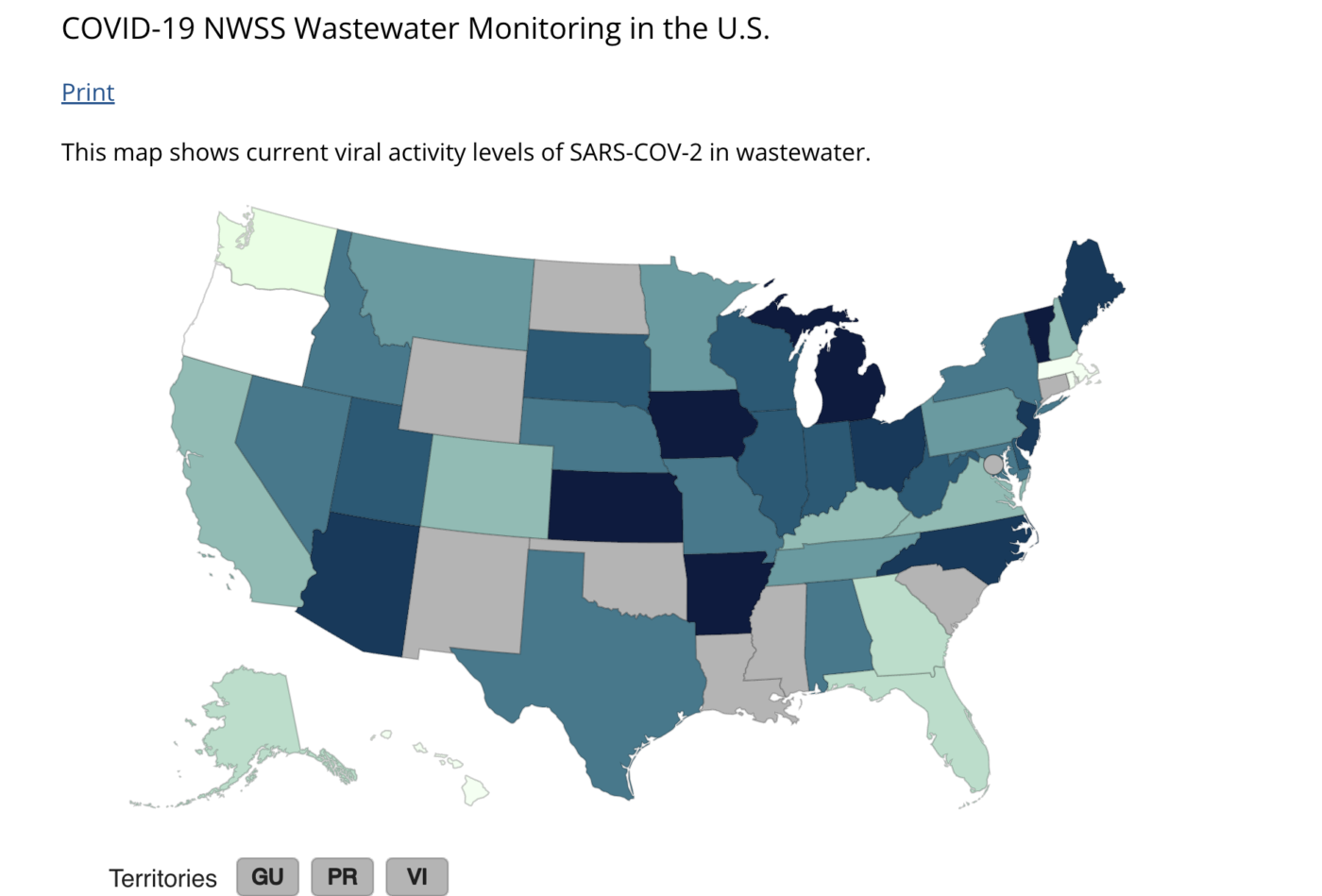The CDC unveiled a new wastewater tracking dashboard for COVID-19 at the end of November. Wastewater surveillance serves as an early warning that COVID-19 is spreading in a community. You can now view national, regional, and state trends and track variants.
Nationally, the wastewater viral activity level for COVID-19 is currently high, especially in the Midwest.

California and the West are lower than the national trend for the week ending Nov. 25 according to the CDC data. But the San Francisco Chronicle reported on Friday that:
Data published Friday by the California Department of Public Health show a 48% surge in COVID-19 hospitalizations over the past month, totaling 2,088 admissions in the week ending Nov. 25. California’s COVID-19 test positivity rate climbed from 6.1% to 8.3% during the same period, and the coronavirus’s share of all fatalities rose from 1.5% to 2.7%.
Nationwide, COVID-related hospitalizations continued to increase for the third consecutive week, with over 19,400 new admissions reported in the week ending Nov. 25, according to figures released Friday by the U.S. Centers for Disease Control and Prevention.
Rise in COVID, flu and RSV prompt Bay Area health recommendations — including masking, SF Chronicle, Dec. 1

CDC data also shows that “the amount of respiratory illness (fever plus cough or sore throat) causing people to seek healthcare continues to increase across most areas of the country.” California is one of the hardest hit states:

Since December 2020, the California Department of Public Health (CDPH) has collaborated with the California State Water Resource Control Board and six waste water treatment plants (WWTPs) in four counties to pilot a wastewater surveillance program, as part of the U.S. Centers for Disease Control and Prevention (CDC) National Wastewater Surveillance System (NWSS). The CDPH NWSS project has since expanded to 13 WWTPs in 11 counties (see list below).

